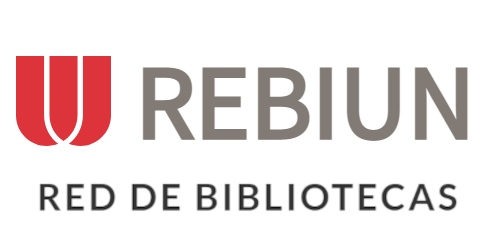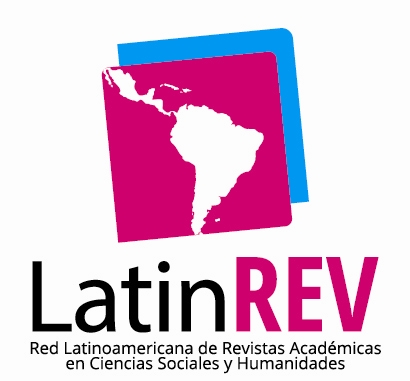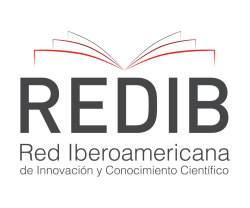Relación de las áreas verdes urbanas con el microclima y la calidad de vida en el distrito de Nuevo Chimbote (Ancash, Perú, 2022)
Resumen
El presente estudio evaluó la relación entre las áreas verdes urbanas, el microclima y la calidad de vida en el distrito de Nuevo Chimbote (Ancash, Perú). Se aplicó un enfoque descriptivo, cuantitativo y correlacional, mediante un diseño no experimental y de trabajo de campo. Se analizaron 246 áreas verdes seleccionadas de forma estratificada por sectores urbanos. Se midieron parámetros como la cobertura vegetal, temperatura, humedad relativa, velocidad del viento y captura de CO₂ (utilizando i-Tree Canopy y Google Earth). Los resultados revelaron un predominio de superficies duras (77.3%) frente a vegetación (22.7%), siendo el estrato herbáceo el más representativo. Las áreas con mayor cobertura vegetal registraron incrementos significativos en la humedad relativa (10.9%), aunque no se observaron cambios estadísticamente significativos en la temperatura o el viento. La captura de carbono alcanzó 0.948 kgCO₂/m²/año en el sector con mayor vegetación. Se propone un plan de gestión integral que promueve la sostenibilidad urbana, mejora la regulación microclimática y contribuye al bienestar de la población.
Descargas
Citas
Akbari, H., Davis, S., Dorsano, S., Huang, J., y Winnett, S. (Eds.). (1992). Cooling our communities: A guidebook on tree planting and light-colored surfacing. US Environmental Protection Agency, Office of Policy Analysis, Climate Change Division. American Planning Association, Planning and Urban Design Standards, John Wiley and Sons.
Akbari, H., Pomerantz, M., y Taha, H. (2001). Cool surfaces and shade trees to reduce energy use and improve air quality in urban areas. Solar energy, 70(3), 295-310.
Albán, S. y Peralta, M. (2017). Propuesta de un índice de la calidad ambiental para el área urbana de Cuenca. [Tesis de maestría, Universidad de Azuay]. https://dspace.uazuay.edu.ec/handle/datos/7221
Albino, D. (2018). Espacios públicos y áreas verdes en la ciudad de huacho. [Tesis de maestría, Universidad Nacional José Faustino Sánchez Carrión]. https://1library.co/document/y8072orq-espacios-publicos-areas-verdes-ciudad-huacho.html
Alcalá, J., Sosa, M., Moreno, M., Ortega, J., Quintana, C., y Holguín, C. (2008). Especies arbóreas evaluadas como bioacumuladoras de azufre en la ciudad de Chihuahua, México. Ecología Aplicada, 7(1-2), 1-8. http://www.scielo.org.pe/scielo.php?script=sci_arttext&pid=S1726-22162008000100003
Antúnez, Y., Díaz, E. y Kuong, S. (2021). La evaluación del índice de área verde en los espacios públicos del distrito de Chorrillos. [Tesis de grado, Universidad Científica del Sur]. https://doi.org/10.21142/tb.2021.2067
Arévalo, W. (2020). La vegetación como función ambiental de los parques en ciudades del desierto costero peruano - estudio de caso. Lima Norte - 2016 - 2019. [Tesis de doctorado, Universidad Nacional Mayor de San Marcos]. https://cybertesis.unmsm.edu.pe/handle/20.500.12672/16157
Astiaso Garcia, D. (2017). Green areas management and bioengineering techniques for improving urban ecological sustainability. Sustainable Cities and Society, 30, 108-117. https://doi.org/10.1016/j.scs.2017.01.008
Ayala-Azcárraga, C., Díaz, D., y Zambrano, L. (2019). Characteristics of urban parks and their relation to user well-being. Landscape and Urban Planning, 189, 27–35. https://doi.org/10.1016/j.landurbplan.2019.04.005
Bates, C. R., Bohnert, A. M., y Gerstein, D. E. (2018). Green schoolyards in low-income urban neighborhoods: Natural spaces for positive youth development outcomes. Frontiers in Psychology, 9, 805. https://doi.org/10.3389/fpsyg.2018.00805
Bherwani, H., Singh, A., y Kumar, R. (2020). Assessment methods of urban microclimate and its parameters: A critical review to take the research from lab to land. Urban Climate, 34, 100690. https://doi.org/10.1016/j.uclim.2020.100690
Bonham, C. D. (2013). Measurements for Terrestrial Vegetation (2nd ed.). John Wiley & Sons.
Boullosa, N. y Leiva, L. (2023). Gestión de áreas verdes y calidad de vida urbana en la población del distrito de Iquitos - 2023. Tesis para optar el Grado Académico de Maestro en Ciencias con Mención en Gestión Ambiental y Desarrollo Sostenible, Escuela de Posgrado, Universidad Continental, Lima. Perú.
Briceño, M. y Gil, B. (2003). Calidad ambiental de la imagen urbana Sectores La Parroquia, Alto Chama, Carrizal, Los Curos, Zona Industrial y barrios La Candelaria y San Buenaventura de la ciudad de Mérida-Venezuela Fermentum. Revista Venezolana de Sociología y Antropología, XIII (38), 345 – 382.
Brunner, J., y Cozens, P. (2012). ‘Where Have All the Trees Gone?’ Urban Consolidation and the Demise of Urban Vegetation: A Case Study from Western Australia. Planning Practice & Research, 28(2), 231–255. https://doi.org/10.1080/02697459.2012.733525
Burkhard, B., y Maes, J. (Eds.). (2017). Mapping ecosystem services (1st ed.). Pensoft Publishers. https://doi.org/10.3897/ab.e12837
Campagnaro, T., Vecchiato, D., Arnberger, A., Celegato, R., Da Re, R., Rizzetto, R., Semenzato, P., Sitzia, T., Tempesta, T., y Cattaneo, D. (2020). General, stress relief and perceived safety preferences for green spaces in the historic city of Padua (Italy). Urban Forestry & Urban Greening, 52, 126695. https://doi.org/10.1016/j.ufug.2020.126695
Capristán, R. (2017). Manejo de áreas verdes en el distrito de Chaclacayo. [Tesis de grado, Universidad Nacional Agraria La Molina]. https://repositorio.lamolina.edu.pe/handle/20.500.12996/3470
Carmona-Ortega, M., Falfán, I., Lascurain-Rangel, M., y Benítez-Badillo, G. (2022). Distribución espacial de las áreas verdes urbanas en Xalapa, México: un caso de inequidad. Sociedad y Ambiente, 25, 1-32. https://doi.org/10.31840/sya.vi25.2559
Casprini, D., Oppio, A., Rossi, G., y Bengo, I. (2023). Managing Urban Green Areas: The Benefits of Collaborative Governance for Green Spaces. Land, 12(10), 1872. https://doi.org/10.3390/land12101872
Castelao, G. N., y Finelli, N. (2019). Distribución de espacios verdes públicos y calidad de vida. análisis comparativo en tres municipios de la provincia de Santa Fe. VII Congreso Nacional de Geografía de Universidades Públicas y XXI Jornadas de Geografía de la UNLP.
Castro Chamorro, M. A., Mora Pupiales, L. I., Paz Delgado, L. V., y Torres Quiroz, V. A. (2009). Entorno natural de la escuela como laboratorio para la enseñanza-aprendizaje-evaluación de las ciencias naturales y educación ambiental en la Institución Educativa Municipal Santa Teresita sede Santo Tomás de Aquino, Catambuco (Informe final de Trabajo de Grado). Universidad de Nariño.
Chang, Q., Liu, X., Wu, J., y He, P. (2015). MSPA-based urban green infrastructure planning and management approach for urban sustainability: Case study of Longgang in China. Journal of Urban Planning and Development, 141(3), 05014024. https://doi.org/10.1061/(ASCE)UP.1943-5444.0000247
Chew, L. W., y Norford, L. K. (2019). Pedestrian-level wind speed enhancement with void decks in three-dimensional urban street canyons. Building and Environment, 155, 399–407. https://doi.org/10.1016/j.buildenv.2019.03.058
Chiesura, A. (2004). The role of urban parks for the sustainable city. Landscape and Urban Planning, 68(1), 129-138. https://doi.org/10.1016/j.landurbplan.2003.08.003
Cochran, W. G. (1977). Sampling Techniques (3rd ed.). John Wiley & Sons.
Congreso de la República del Perú. (1996). Ley N° 26664: Dictan disposiciones referidas a la administración de las áreas verdes de uso público. Diario Oficial El Peruano.
Congreso de la República del Perú. (2007). Ley N° 29090, Ley de Regulación de Habilitaciones Urbanas y de Edificaciones. Diario Oficial El Peruano.
Coutts, A., Beringer, J., y Tapper, N. (2010). Changing urban climate and CO2 emissions: Implications for the development of policies for sustainable cities. Urban Policy and Research, 28(1), 27–47. https://doi.org/10.1080/08111140903437716
Crouse, D. L., Pinault, L., Christidis, T., Lavigne, E., Thomson, E. M., y Villeneuve, P. J. (2021). Residential greenness and indicators of stress and mental well-being in a Canadian national-level survey. Environmental Research, 192, 110267. https://doi.org/10.1016/j.envres.2020.110267
Dadvand, P., de Nazelle, A., Triguero-Mas, M., Schembari, A., Cirach, M., Amoly, E., y Nieuwenhuijsen, M. J. (2014). Green spaces and cognitive development in primary schoolchildren. Proceedings of the National Academy of Sciences, 112(26), 7937-7942. https://doi.org/10.1073/pnas.1503402112
Dadvand, P., Villanueva, C. M., Font-Ribera, L., Martinez, D., Basagaña, X., Belmonte, J., Vrijheid, M., Gražulevičienė, R., Kogevinas, M., y Nieuwenhuijsen, M. J. (2014). Risks and benefits of green spaces for children: A cross-sectional study of associations with sedentary behavior, obesity, asthma, and allergy. Environmental Health Perspectives, 122(12), 1329-1335. https://doi.org/10.1289/ehp.130803
Dennis, M., y James, P. (2016). User participation in urban green commons: Exploring the links between access, voluntarism, biodiversity and well-being. Urban Forestry & Urban Greening, 15, 22-31. https://doi.org/10.1016/j.ufug.2015.11.009
de Dear, R., y Kim, J. (2016). Thermal Comfort Inside and Outside Buildings. In Y. Tamura & R. Yoshie (Eds.), Advanced Environmental Wind Engineering (pp. 101–120). Springer, Tokyo. https://doi.org/10.1007/978-4-431-55912-2_5
de Vries, S., van Dillen, S. M. E., Groenewegen, P. P., y Spreeuwenberg, P. (2013). Streetscape greenery and health: Stress, social cohesion and physical activity as mediators. Social Science & Medicine, 94, 26-33. https://doi.org/10.1016/j.socscimed.2013.06.030
Dixon, G. R., y Aldous, D. E. (Eds.). (2014). Horticulture: Plants for People and Places, Volume 2: Environmental Horticulture. Springer Dordrecht. https://doi.org/10.1007/978-94-017-8581-5
Domínguez Madrid, A. Y. (2016). Estimaciones de captura de los parques y emisiones de CO2 vehicular en Tijuana, B.C. [Tesis de maestría, El Colegio de la Frontera Norte]. El Colegio de la Frontera Norte.
Droste, A. M., Steeneveld, G. J., y Holtslag, A. A. M. (2018). Introducing the urban wind island effect. Environmental Research Letters, 13(9), 094007. https://doi.org/10.1088/1748-9326/aad8ef
Duval, V. S., y Campo, A. M. (2016). Variaciones microclimáticas en el interior y exterior del bosque de caldén (Prosopis caldenia), Argentina. Cuadernos de Geografía: Revista Colombiana de Geografía, 26(1), 37-49. https://doi.org/10.15446/rcdg.v26n1.42372
Duval, V. S., Benedetti, G. M., y Baudis, K. (2020). El impacto del arbolado de alineación en el microclima urbano. Bahía Blanca, Argentina. Investigaciones Geográficas, (73), 171-188. https://doi.org/10.14198/INGEO2020.DBB
Dwyer, J. F., McPherson, E. G., Schroeder, H. W., y Rowntree, R. A. (1992). Assessing the benefits and costs of the urban forest. Arboriculture and Urban Forestry, 18(5), 227-234. https://doi.org/10.48044/jauf.1992.045
Elmqvist, T., Setälä, H., Handel, S. N., van der Ploeg, S., Aronson, J., Blignaut, J. N., … y Kronenberg, J. (2015). Benefits of restoring ecosystem services in urban areas. Current Opinion in Environmental Sustainability, 14, 101-108. https://doi.org/10.1016/j.cosust.2015.05.001
European Environment Agency (EEA). (2020). Air quality in Europe - 2020 report (EEA Report No 9/2020). https://doi.org/10.2800/786656
Espinoza, B. & López, S. (2023). Estimación del carbono capturado por las especies vegetales presentes en las riberas del río Burgay dentro de la zona urbana de la ciudad de Azogues – Ecuador. [Tesis de grado, Universidad Politécnica Salesiana]. https://dspace.ups.edu.ec/handle/123456789/24359
Fawzy, S., Osman, A. I., y Doran, J. (2020). Estrategias para la mitigación del cambio climático: una revisión. Environmental Chemistry Letters, 18(6), 2069-2094. https://doi.org/10.1007/s10311-020-01059-w
Fenner, A. E., Kibert, C. J., Woo, J., Morque, S., Razkenari, M., Hakim, H., y Lu, X. (2018). The carbon footprint of buildings: A review of methodologies and applications. Renewable and Sustainable Energy Reviews, 94, 1142-1152.
Flores-Xolocotzi, R. (2012). Incorporando desarrollo sustentable y gobernanza a la gestión y planificación de áreas verdes urbanas. Frontera Norte, 24 (48),165-190.
Flores-Xolocotzi, R. y Gonzales-Guillén, M. (2010). Planificación de sistemas de áreas verdes y parques públicos. Revista Mexicana. de Ciencias Forestales, 1 (1), 18 – 23.
Frumkin, H., Bratman, G. N., Breslow, S. J., Cochran, B., Kahn, P. H., Lawler, J. J., Levin, P. S., Tandon, P. S., Varanasi, U., Wolf, K. L., y Wood, S. A. (2017). Nature contact and human health: A research agenda. Environmental Health Perspectives, 125(7), 075001. https://doi.org/10.1289/EHP1663
Frutos, P. y Esteban, S. (2009). Estimación de los beneficios generados por los parques y jardines urbanos a través del método de valoración contingente. Urban Public Economics Review, 10, 13-51.
Fuentes, G. (2018). La isla de calor y la incidencia de la arborización urbana en el confort térmico del centro histórico de la ciudad de Arequipa 2017. [Tesis de doctorado, Universidad Católica de Santa María]. https://repositorio.ucsm.edu.pe/handle/20.500.12920/8383
Galindo Bianconi, A. (2012). La vegetación como parte de la sustentabilidad urbana: beneficios, problemáticas y soluciones, para el Valle de Toluca. Quivera, 14 (1), 98-108.
García-Chato, G. (2014). Ambiente de aprendizaje su significado en educación pre escolar. Revista Educación y Desarrollo, 29, 63 – 72.
Gareca, M. y Villapano. H. (2017). Impacto de las áreas verdes en el proceso de enseñanza aprendizaje. Revista de Ciencia y Tecnología e Innovación, 14 (15), 877-892. ISSN 2225-8787
Georgi, J. N., y Dimitriou, D. (2010). The contribution of urban green spaces to the improvement of environment in cities: Case study of Chania, Greece. Building and Environment, 45(6), 1401–1414. https://doi.org/10.1016/j.buildenv.2009.12.003
GDF, (2007). Agenda ambiental de la ciudad de México Programa de Medio Ambiente 2007-2012. Secretaría del Medio Ambiente del Gobierno del Distrito Federal.179p.
Giannas, S. (2001). Bioclimatic principles of town-planning design. En Environmental design of towns and open space (pp. 177–207). Patra: Hellenic Open University.
Giannico, V., Spano, G., Elia, M., D’Este, M., Sanesi, G., y Lafortezza, R. (2021). Green spaces, quality of life, and citizen perception in European cities. Environmental Research, 196, 110922. https://doi.org/10.1016/j.envres.2021.110922
Godwin, C., Chen, G., y Singh, K. K. (2015). The impact of urban residential development patterns on forest carbon density: An integration of LiDAR, aerial photography and field mensuration. Landscape and Urban Planning, 136, 97-109. https://doi.org/10.1016/j.landurbplan.2014.12.007
Gómez, L. (2020). Relación del verde urbano de Quito y las condiciones socioeconómicas de la población desde una perspectiva de justicia especial. [Tesis de maestría, Flacso Andes]. http://hdl.handle.net/10469/16104
Grigoletto, A., Toselli, S., Zijlema, W., Marquez, S., Triguero-Mas, M., Gidlow, C., Grazuleviciene, R., Van de Berg, M., Kruize, H., Maas, J., y Nieuwenhuijsen, M. J. (2023). Restoration in mental health after visiting urban green spaces, who is most affected? Comparison between good/poor mental health in four European cities. Environmental Research, 223, 115397. https://doi.org/10.1016/j.envres.2023.115397
Guarda-Saavedra, P., Muñoz-Quezada, M. T., Cortinez-O'ryan, A., Aguilar-Farías, N., y Vargas-Gaete, R. (2022). Beneficios de los espacios verdes y actividad física en el bienestar y salud de las personas. Revista médica de Chile, 150(8), 1095-1107. https://doi.org/10.4067/S0034-98872022000801095
Haaland, C., y van den Bosch, C. K. (2015). Challenges and strategies for urban green-space planning in cities undergoing densification: A review. Urban Forestry & Urban Greening, 14(4), 760-771. https://doi.org/10.1016/j.ufug.2015.07.009
Hanna, E., y Comín, F. A. (2021). Urban Green Infrastructure and Sustainable Development: A Review. Sustainability, 13(20), 11498. https://doi.org/10.3390/su132011498
Hernández, A. (2009). Calidad de vida y medio ambiente urbano indicadores locales de sostenibilidad y calidad de vida urbana. Revista Invi, 65 (24), 79-111. http://dx.doi.org/10.4067/S0718-83582009000100003
Hernández-Rodríguez, O. Hernández-Huerta, J. y Ojeda-Barrios, D. (2022). Áreas verdes residenciales, sus beneficios y alcances. Escenarios regionales de la dicotomía entre sustentabilidad ambiental y aprovechamiento de los recursos naturales.
IBM Corp. (2017). IBM SPSS Statistics for Windows, Version 25.0. IBM Corp.
Instituto Nacional de Estadística e Informática (INEI). (2013). Compendio estadístico. Registro nacional de municipalidades en áreas verdes. Sistema estadístico nacional, Lima-Perú.
Instituto Nacional de Estadística e Informática (INEI). (2018). Censos Nacionales 2017: XII de Población, VII de Vivienda y III de Comunidades Indígenas.
IPCC. (2018). Summary for policymakers. En V. Masson-Delmotte, P. Zhai, H.-O. Pörtner, D. Roberts, J. Skea, P. R. Shukla, ... T. Waterfield (Eds.), Global warming of 1.5 °C. An IPCC special report on the impacts of global warming of 1.5 °C above pre-industrial levels and related global greenhouse gas emission pathways, in the context of strengthening the global response to the threat of climate change, sustainable development, and efforts to eradicate poverty. IPCC. En prensa. Disponible en https://www.ipcc.ch/sr15/
IPCC. (2019). Summary for policymakers. En P. R. Shukla, J. Skea, E. Calvo Buendia, V. Masson-Delmotte, H.-O. Pörtner, D. C. Roberts, ... J. Malley (Eds.), Climate change and land: An IPCC special report on climate change, desertification, land degradation, sustainable land management, food security, and greenhouse gas fluxes in terrestrial ecosystems. IPCC. En prensa. Disponible en https://www.ipcc.ch/srccl/
International Organization for Standardization. (2014). ISO 37120:2014: Sustainable development of communities — Indicators for city services and quality of life.
Izazola, H. (2001) “Sustentabilidad y calidad de vida”. Ciudades, 51, 3 – 9.
James, P., Tzoulas, K., Adams, M. D., Barber, A., Box, J., Breuste, J., Elmqvist, T., Frith, M., Gordon, C., Greening, K. L., Handley, J., Haworth, S., Kazmierczak, A. E., Johnston, M., Korpela, K., Moretti, M., Niemelä, J., Pauleit, S., Roe, M. H., Sadler, J. P., y Ward Thompson, C. (2009). Towards an integrated understanding of green space in the European built environment. Urban Forestry & Urban Greening, 8(2), 65-75. https://doi.org/10.1016/j.ufug.2009.02.001
Jaung, W., Carrasco, L. R., Shaikh, S. F. E. A. S., Tan, P. Y., y Richards, D. R. (2020). Temperature and air pollution reductions by urban green spaces are highly valued in a tropical city-state. Urban Forestry & Urban Greening, 55, 126827. https://doi.org/10.1016/j.ufug.2020.126827
Jim, C. Y. (2004). Green-space preservation and allocation for sustainable greening of compact cities. Cities, 21(4), 311-320. https://doi.org/10.1016/j.cities.2004.04.004
Jo, H.-K., Kim, J.-Y., y Park, H.-M. (2019). Carbon reduction and planning strategies for urban parks in Seoul. Urban Forestry & Urban Greening, 41, 48-54. https://doi.org/10.1016/j.ufug.2019.03.009
Li, X., Li, X., Guldmann, J.-M., Cai, Z., Liao, W., Yang, C., y Qiu, Q. (2024). A novel approach to identify the microclimatic edge effect width of urban green spaces at the landscape level: A case study of Changsha, China. Urban Forestry & Urban Greening, 99, 128462. https://doi.org/10.1016/j.ufug.2024.128462
Liang, H., Yan, Y., Yan, Q., y Zhang, Q. (2024). A planning framework to explore shortages and improvements of urban green space provision at the metropolitan scale using novel nSFCA proximity indices. Ecological Indicators, 160, 111822. https://doi.org/10.1016/j.ecolind.2024.111822
Liyan, R., Buccolieri, R., Gao, Z., Ding, W., y Shen, J. (2018). The impact of green space layouts on microclimate and air quality in residential districts of Nanjing, China. Forests, 9(4), 224. https://doi.org/10.3390/f9040224
Loayza, R. (2002). Diagnóstico del Humedal de Villa María. Instituto Ambientalista Natura.
López-García, M. (2014). Evaluación del estado ambiental del distrito de Trujillo - Perú y su influencia en la construcción de ciudad sostenible. UCV-Scientia, 6(2), 109 – 121.
López-Moyao, C. y Rosillo-Pantoja, I. (2021). Las Áreas Verdes Urbanas y Arbolado Urbano como impulsores de Ciudades Sostenibles: Caso de Estudio Parque Jardines de la Hacienda. Revista Digital Ciencia@UAQRO, 14 (2), 70-83. https://revistas.uaq.mx/index.php/ciencia/article/view/627
Makropoulou, M. (2017). Microclimate improvement of inner-city urban areas in a Mediterranean coastal city. Sustainability, 9(6), 882. https://doi.org/10.3390/su9060882
Malca, N. (2012). Contribución de las áreas verdes urbanas a la calidad ambiental del distrito de Comas-Lima, al año 2011. Revista del Instituto de Investigación de la Facultad de Ingeniería Geológica, Minera, metalurgia y Geográfica, 15 (30),117-121.
https://dialnet.unirioja.es/servlet/articulo?codigo=8136068
Martínez-Rodríguez, M., y Cervantes-Nájera, A. (2023). La conexión de las personas con las áreas verdes urbanas: Una revisión de la literatura. Revista Investigium IRE: Ciencias Sociales y Humanas, XIV(1), 52-62. https://doi.org/10.15658/10.15658/INVESTIGIUMIRE.231401.05
Martínez-Valdés, V., Silva Rivera, E., y González Gaudiano, E. J. (2020). Parques urbanos: un enfoque para su estudio como espacio público. Intersticios Sociales, (19), 67-86.
Maylle Torres, E. (2017). Determinación de cantidades de carbono secuestrado por las áreas verdes del distrito de Callería, provincia de Coronel Portillo, Ucayali 2015 (Tesis de maestría). Universidad Nacional de Ucayali, Escuela de Posgrado, Pucallpa, Perú. https://hdl.handle.net/20.500.14621/3875
Meili, N., Manoli, G., Burlando, P., Carmeliet, J., Chow, W. T. L., Coutts, A. M., Roth, M., Velasco, E., Vivoni, E. R., y Fatichi, S. (2021). Tree effects on urban microclimate: Diurnal, seasonal, and climatic temperature differences explained by separating radiation, evapotranspiration, and roughness effects. Urban Forestry & Urban Greening, 58, 126970. https://doi.org/10.1016/j.ufug.2020.126970
Meza Rivera, F. N. (2011). Inventario de especies forestales en las arborizaciones urbanas públicas de Huancayo metropolitano. [Tesis de licenciatura, Universidad Nacional del Centro del Perú, Facultad de Ciencias Forestales y del Ambiente]. http://hdl.handle.net/20.500.12894/2600
Meza-Aguilar, M. del C., Velázquez-Ramírez, L., y Larrucea-Garritz, A. (2017). Recuperación de áreas verdes urbanas. La importancia del diagnóstico fitosanitario para la intervención. Revista Legado de Arquitectura y Diseño, 1 (22).
MINAM. (2012). Informe Nacional de la Calidad del aire 2013 – 2014. Dirección general de la calidad del aire.
Ministerio de Ambiente y Desarrollo Sostenible y Asociación de Corporaciones Autónomas y de Desarrollo Sostenible (ASOCARS). (2015). Informe nacional de calidad ambiental urbana: Áreas urbanas con población superior a 500,000 habitantes, 2013 (Año 1, Vol. 1). Bogotá, Colombia.
Ministerio de Vivienda, Construcción y Saneamiento (RNE). (2023). Ley N° 29090, Ley de regulación de habilitaciones urbanas y edificaciones. Diario Oficial El Peruano.
Ministerio de Vivienda, Construcción y Saneamiento (MVCS). (2023). Decreto Supremo N° 022-2022-VIVIENDA, Reglamento de Ordenamiento Territorial y Desarrollo Urbano Sostenible. Diario Oficial El Peruano.
Mittal, H., Sharma, A., y Gairola, A. (2018). A review on the study of urban wind at the pedestrian level around buildings. Journal of Building Engineering, 18, 154–163. https://doi.org/10.1016/j.jobe.2018.03.006
Mitchell, R., y Popham, F. (2008). Effect of exposure to natural environment on health inequalities: An observational population study. The Lancet, 372(9650), 1655-1660. https://doi.org/10.1016/S0140-6736(08)61689-X
Morales-Cerdas, V., Piedra Castro, L., Romero Vargas, M., y Bermúdez Rojas, T. (2018). Indicadores ambientales de áreas verdes urbanas para la gestión en dos ciudades de Costa Rica. Revista de Biología Tropical, 66(4), 1421-1435. http://dx.doi.org/10.15517/rbt.v66i4.32258
Morales-Gallegos, L. M., Martínez-Trinidad, T., Hernández-De la Rosa, P., Gómez-Guerrero, A., Alvarado-Rosales, D., y Saavedra-Romero, L. de L. (2023). Diversidad, estructura y salud del arbolado en áreas verdes de la ciudad de Texcoco, México. BOSQUE, 44(2), 401-414. https://doi.org/10.4067/S0717-92002023000200401
Moreira Almeida, G. D., y Vélez Loor, J. A. (2023). Índice verde urbano para la elaboración de un plan de manejo de áreas verdes en la parroquia Ángel Pedro Giler, Tosagua - Manabí (Tesis de pregrado). Escuela Superior Politécnica Agropecuaria de Manabí Manuel Félix López, Carrera de Ingeniería Ambiental, Calceta, Ecuador.
Municipalidad Distrital de Nuevo Chimbote (2013). Plan de desarrollo urbano de Nuevo Chimbote (2013 – 2021). Propuesta de Plan de Desarrollo Urbano Sostenible.
Mwendwa, P. y Giliba, R. A. (2012). Benefits and Challenges of Urban Green Spaces. Chinese Journal of Population Resources and Environment, 10(1), 73–79. https://doi.org/10.1080/10042857.2012.10685062
Naciones Unidas. (2017). Nueva Agenda Urbana. Resolución adoptada por la Asamblea General el 23 de diciembre de 2016 (A/RES/71/256). Naciones Unidas.
Nguyen, C. T. y Chidthaisong, A. (2024). Servicios ecosistémicos proporcionados por los espacios verdes urbanos en la metrópolis de Bangkok: conciencia pública e implicaciones para la planificación. Urban Ecosystems, 27, 855–868. https://doi.org/10.1007/s11252-023-01482-1
Nowak, D. J., Crane, D. E., y Stevens, J. C. (2006). Air pollution removal by urban trees and shrubs in the United States. Urban Forestry & Urban Greening, 4(3), 115-123.
Nuruzzaman, M. (2015). Urban heat island: Causes, effects and mitigation measures - A review. International Journal of Environmental Monitoring and Analysis, 3(2), 67-73. https://doi.org/10.11648/j.ijema.20150302.15
Nutsford, D., Pearson, A. L., y Kingham, S. (2013). An ecological study investigating the association between access to urban green space and mental health. Public Health, 127(11), 1005-1011. https://doi.org/10.1016/j.puhe.2013.08.016
Núñez, J. (2021). Análisis espacial de las áreas verdes urbanas de la Ciudad de México. Economía, Sociedad y Territorio, XXI (67): 803 – 833. http://dx.doi.org/10.22136/est20211661 . https://www.scielo.org.mx/scielo.php?script=sci_arttext&pid=S1405-84212021000300803
Organización Mundial de la Salud (OMS). (2017). Urban green spaces and health: A review of evidence. World Health Organization. https://www.who.int
Östberg, J., Martinsson, M., Stål, Ö. y Fransson, A.-M. (2012). Risk of root intrusion by tree and shrub species into sewer pipes in Swedish urban areas. Urban Forestry & Urban Greening, 11(1), 65-71. https://doi.org/10.1016/j.ufug.2011.11.001
Pálsdóttir, A. M., Persson, D., Persson, B., y Grahn, P. (2014). The journey of recovery and empowerment embraced by nature–Clients' perspectives on nature-based rehabilitation in relation to the role of the natural environment. International Journal of Environmental Research and Public Health, 11(7), 7094-7115. https://doi.org/10.3390/ijerph110707094
Pandey, R. K., y Kumar, H. (2018). Tree species diversity and composition in urban green spaces of Allahabad City (U.P). Plant Archives, 18(2), 2687-2692.
Pereira. J. (2015). Las áreas verdes urbanas como generadoras de ecoservicios para el bienestar humano. Propuesta de gestión de parques para la localidad de Engativá. [Tesis de maestría, Pontificia Universidad Javeriana].
Pérez, J. y De La Barrera, F. (2021). Rol de la vegetación en el control del microclima urbano y en la adaptación a los efectos del cambio climático En un barrio de San Pedro de la Paz, Chile. Urbe, 13, 36-52. https://doi.org/10.29393/ur13-3rvjp20003
Pérez, M. (2012). Conceptualización sobre el Desarrollo Sostenible: operacionalización del concepto para Colombia. Revista Punto de Vista, IIII (5): 139-158.
Pérez, S y López I. (2015), Áreas verdes y arbolado en Mérida, Yucatán. Hacia una sostenibilidad urbana. Economía, Sociedad y Territorio, XV (47): 1-33.
Peters, K., Stodolska, M., y Horolets, A. (2016). The role of natural environments in developing a sense of belonging: A comparative study of immigrants in the U.S., Poland, the Netherlands and Germany. Urban Forestry & Urban Greening, 17, 63–70. https://doi.org/10.1016/j.ufug.2016.04.001
Pinzón, M. y Echeverri, I. (2010). Espacio público, Cultura y Calidad Ambiental Urbana. Revista de investigación y desarrollo,18 (1): 92-113.
Programa de las Naciones Unidas para el Desarrollo (PNUD) (2013). Informe sobre Desarrollo Humano 2013. El ascenso del Sur: Progreso humano en un mundo diverso. ISBN 978-92-1-126340-4
Quispe, J. y Tuesta, Y. (2019). Valoración económica de áreas verdes urbanas de uso público en el Centro Histórico de la Ciudad de Puno, 2019. Revista de Ciencia Tecnología e Innovación, 17(19), 101-114. https://doi.org/10.56469/rcti.v17i19.221
Reyes, C. (2014). Gestión integral de áreas verdes urbanas: un nuevo campo profesional de la arquitectura de paisaje (1° ed.). ISBN: 978-607-479-144-0.
Rizwan, A. M., Dennis, L. Y. C., y Liu, C. (2008). A review on the generation, determination and mitigation of Urban Heat Island. Journal of Environmental Sciences, 20(1), 120-128. https://doi.org/10.1016/S1001-0742(08)60019-4
Rodríguez-Rodríguez, D. W., María, B. C. S., Cueva-Rodríguez, O. B., y Cueva-Rodríguez, M. (2023). Gobernanza para la conservación de las áreas verdes urbanas frente al cambio climático en el Perú; estudio de caso. Zenodo (CERN European Organization for Nuclear Research). https://doi.org/10.5281/zenodo.8075531
Russo, A., y Cirella, G. T. (2021). Urban Ecosystem Services: New Findings for Landscape Architects, Urban Planners, and Policymakers. Land, 10(1), 88. https://doi.org/10.3390/land10010088
Salvucci, M. E., y Crafts-Brandner, S. J. (2004). Mechanism for deactivation of Rubisco under moderate heat stress. Physiologia Plantarum, 122(4), 513-519. https://doi.org/10.1111/j.1399-3054.2004.00419.x
Samson, R., Grote, R., Calfapietra, C., Cariñanos, P., Fares, S., Paoletti, E., y Tiwary, A. (2017). Urban trees and their relation to air pollution. En D. Pearlmutter, C. Calfapietra, R. Samson, L. O’Brien, S. Krajter, G. Sanesi, & R. Alonso del Amo (Eds.), The Urban Forest (pp. 111-144). Springer. https://doi.org/10.1007/978-3-319-50280-9_5
Santillán-Fernández, A., Cruz, I., Terrazas, C. E., López, J. V., Hernández, B., y Bautista-Ortega, J. (2020). Dinámica de uso de suelo e índice verde en Poza Rica, Veracruz. Revista Mexicana de Ciencias Forestales, 11 (57): 153-173 https://doi.org/10.29298/rmcf.v11i57.648
Seto, K. C., Dhakal, S., Bigio, A., Blanco, H., y Ramaswami, A. (2014). Human settlements, infrastructure, and spatial planning. En Cambridge University Press. Cambridge.
Shaw, W., Magnum, W., y Lyons, J. (1985) Residential enjoyment of wildlife resources by Americans. Leisure Sciences, 7: 361-375. https://doi.org/10.1080/01490408509512130
Shui, T., Liu, J., Yuan, Q., Qu, Y., Jin, H., Cao, J., Liu, L., y Chen, X. (2018). Assessment of pedestrian-level wind conditions in severe cold regions of China. Building and Environment, 135, 53–67. https://doi.org/10.1016/j.buildenv.2018.03.006
Silva. P. (2018). Propuestas de Recuperación, Generación y Manejo Sustentable de los Espacios Verdes Urbanos en las Urbanizaciones del Distrito de Nuevo. Chimbote. [Tesis de maestría, Universidad Nacional del Santa].
Stojanovic, N., Tesic, M., Petrovic, J., Corovic, D., Vukmirovic, M., Lisica, A., y Petrovic, U. (2020). The effect of roadside green spaces on wind speed reduction in the urban environment. Fresenius Environmental Bulletin, 29(12), 10465-10473.
Suárez Caicedo MN, Arosteguí Hurtado SA, Remache Chicango EG, Rosero Arboleda CK. CALIDAD DE VIDA: EL CAMINO DE LA OBJETIVIDAD A LA SUBJETIVIDAD EN POBLACIÓN GENERAL Y GRUPOS COMO: NIÑOS Y JÓVENES, PERSONAS CON DISCAPACIDAD Y ADULTOS MAYORES. Rev Med Vozandes. 2022; 33 (1): 61- 68
Syamili, M. S., Takala, T., Korrensalo, A., y Tuittila, E.-S. (2023). Happiness in urban green spaces: A systematic literature review. Urban Forestry & Urban Greening, 86, 128042. https://doi.org/10.1016/j.ufug.2023.128042
Tovar, G. (2016). Propuesta de plan para la gestión de la infraestructura verde urbana de Bogotá Distrito Capital. https://doi.org/10.11144/Javeriana.10554.20486
Turner, W. R., Nakamura, T., y Dinetti, M. (2004). Global urbanization and the separation of humans from nature. BioScience, 54(6), 585–590. https://doi.org/10.1641/0006-3568(2004)054[0585:GUATSO]2.0.CO;2
Trindade da Silva, F., y Engel de Alvarez, C. (2015). An integrated approach for ventilation's assessment on outdoor thermal comfort. Building and Environment, 87, 59–71. https://doi.org/10.1016/j.buildenv.2015.01.018
Ulrich, R. S., Simons, R. F., Losito, B. D., Fiorito, E., Miles, M. A., y Zelson, M. (1991). Stress recovery during exposure to natural and urban environments. Journal of Environmental Psychology, 11(3), 201-230. https://doi.org/10.1016/S0272-4944(05)80184-7
United Nations Human Settlements Programme. (2010). The state of the world's cities 2010/2011: Bridging the urban divide. Earthscan.
Váscones Pérez, J. E. (2023). Gestión de las áreas verdes de parques/jardines y actitud ambientalista de los trabajadores del área ecológico ambientalista en el distrito de Nuevo Chimbote, 2023 [Tesis de licenciatura, Universidad Nacional del Santa]. Repositorio Institucional UNS. https://hdl.handle.net/20.500.12692/126814
Villasís-Keever, Miguel Ángel. (2022). La evaluación de la calidad de vida como parte de la atención médica en pacientes pediátricos. Revista mexicana de pediatría, 89(3), 93-94. Epub 26 de mayo de 2023.https://doi.org/10.35366/109304
Voogt, J. A. (2004). Urban heat islands: hotter cities. America Institute of Biological Sciences.
Wesz, J. G. B., Miron, L. I. G., Delsante, I., y Tzortzopoulos, P. (2023). Urban quality of life: A systematic literature review. Urban Science, 7(2), 56. https://doi.org/10.3390/urbansci7020056
Williams, T. B. (1991). Microclimatic Temperature Relationships over Different Surfaces. Journal of Geography, 90(6), 285–291. https://doi.org/10.1080/00221349108979321
Xiao, X. D., Dong, L., Yan, H., Yang, N., y Xiong, Y. (2018). The influence of the spatial characteristics of urban green space on the urban heat island effect in Suzhou Industrial Park. Sustainable Cities and Society, 40, 428–439. https://doi.org/10.1016/j.scs.2018.04.002
Yang, S., Wang, L. (L.), Stathopoulos, T., y Marey, A. M. (2023). Urban microclimate and its impact on built environment – A review. Building and Environment, 238, 110334. https://doi.org/10.1016/j.buildenv.2023.110334
Yang, W., Lin, Y., y Li, C. Q. (2018). Effects of landscape design on urban microclimate and thermal comfort in tropical climate. Advances in Meteorology, 2018, 2809649. https://doi.org/10.1155/2018/2809649
Yangali, J.S., Vásquez, M., Huaita, D., y Baldeón, M. (2021). Comportamiento ecológico y cultura ambiental, fomentada mediante la educación virtual en estudiantes de Lima-Perú. Revista de Ciencias Sociales (Ve), XXVII (1), 385 - 398.
Yu, Z., Yang, G., Zuo, S., Jørgensen, G., Koga, M., y Vejre, H. (2020). Critical review on the cooling effect of urban blue-green space: A threshold-size perspective. Urban Forestry & Urban Greening, 49, 126630. https://doi.org/10.1016/j.ufug.2020.126630
Yulibeisi, D., Pino, M., Ronald, R., Quintana, L. M., y Gómez, A. (2022). Caracterización florística y condición actual del arbolado urbano, El Vigía, Mérida, Venezuela. Recursos Rurais, 18, 17-30. https://doi.org/10.15304/rr.id8568
Zhang, Y., Van den Berg, A. E., Van Dijk, T., y Weitkamp, G. (2017). Quality over quantity: Contribution of urban green space to neighborhood satisfaction. International Journal of Environmental Research and Public Health, 14(5), 535. https://doi.org/10.3390/ijerph14050535
Zölch, T., Maderspacher, J., Wamsler, C., y Pauleit, S. (2016). Using green infrastructure for urban climate-proofing: An evaluation of heat mitigation measures at the micro-scale. Urban Forestry & Urban Greening, 20, 305-316. https://doi.org/10.1016/j.ufug.2016.09.011
Zuñiga, A. (2009). Indicadores para la evaluación de la calidad ambiental del hábitat urbano. Revista Científica Nexo, 22 (1): 23-31.
Derechos de autor 2025 Sabino Felipe Zavaleta Aguilar , Guillermo Belisario Saldaña Rojas, Nataly Yessenia Senmache Zamudio

Esta obra está bajo licencia internacional Creative Commons Reconocimiento 4.0.













.png)




















.png)
1.png)


